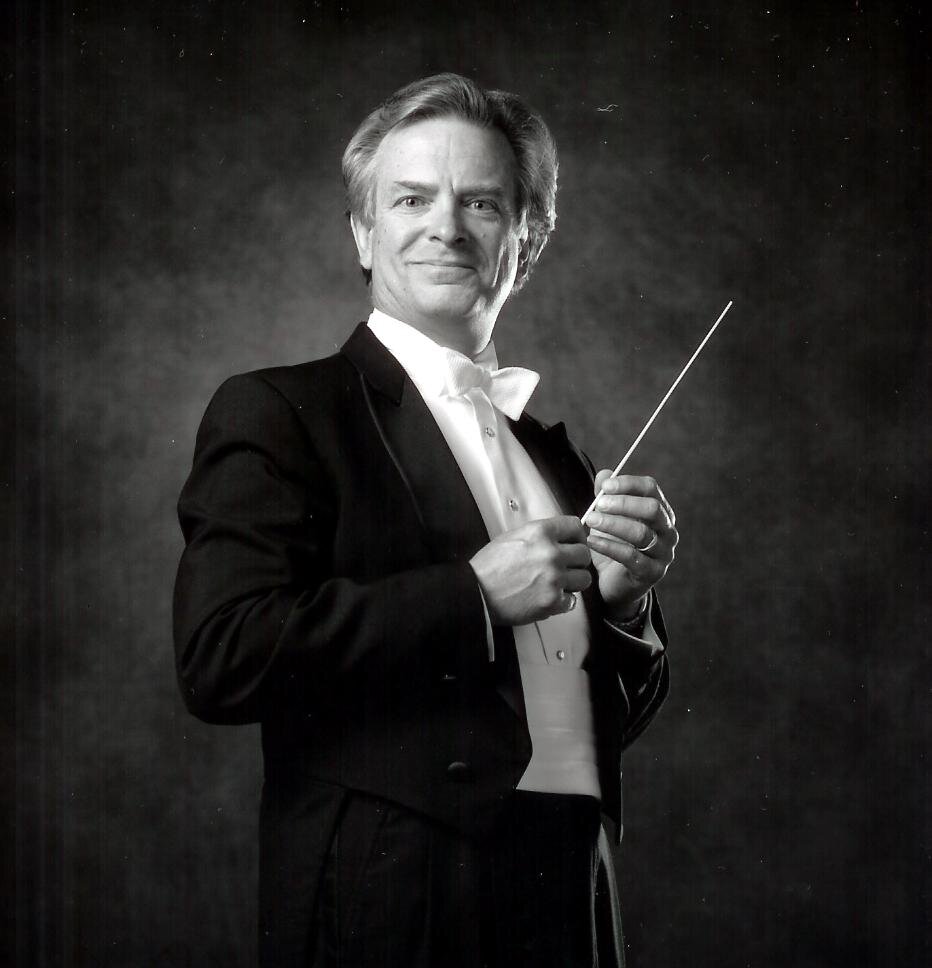

| Steven
Larsen’s distinguished conducting and energetic
leadership has brought two “Orchestra of the
Year” awards to the Rockford Symphony Orchestra
and two “Conductor of the Year” awards for himself
– honors shared by no other Illinois conductor.
Critics have praised his
ease with many musical styles
and periods, his sense of line
and dramatic tension, the lyricism of his approach and his ability
to bring
a work to life. Orchestral musicians have noted
his efficient rehearsal technique, his clear and consistent
conducting style and his warmth
and collegiality. Soloists have
commented on his sensitivity and
flexibility as an accompanist.
Board members and executive directors value his strategic vision and
his
collaborative attitude towards orchestral
management and outreach. In 1991 he was hired to rescue an orchestra that was near collapse; in the years since, the Rockford Symphony has grown to be Illinois’ third largest orchestra, experiencing a six-fold increase in revenues, quadrupling the number of performances and more than tripling its audience. Under Larsen’s leadership the orchestra has added a successful pops series, summer concerts, ballet, operas, special festivals and galas, and several educational programs. It has earned awards for its performance quality, stimulating programming, educational outreach, collaboration with other local and state arts groups and importance to community. The Rockford Register Star, in an editorial, stated that “Larsen is the best ambassador the RSO ever had.” Similarly, soon after Larsen took the baton at the Champaign-Urbana Symphony in 1996, the Champaign News-Gazette wrote, “The Symphony has pulled itself back from the brink, and showed itself well on the road to reintegration and success under the energetic leadership of a young and forceful conductor, Steven Larsen.. . A mood of routine was gone; a feeling of excitement and expectancy had taken its place.” Since he was named Music Director, the orchestra has tackled challenging and provocative repertoire, collaborated with many community and University of Illinois ensembles, expanded its season and achieved artistic respect. Larsen is a native of Chicago, where he attended the American Conservatory of Music, receiving a degree in music theory and composition. As his interests in conducting grew, he auditioned for the graduate program at Northwestern University, earning an assistantship and leading to studies with Margaret Hillis and Bernard Rubenstein. He received that school’s first M.M. in orchestral conducting in 1976. In 1979 he was the only American to be awarded a fellowship in the prestigious Netherlands Broadcasting Company Conductors Course, leading to continued studies with the Russian conductor Kyrill Kondrashin. In 1981 he was invited to participate in the first Conductors Institute, held in Morgantown, West Virginia, as a conducting fellow. A significant portion of his career was spent in the world of opera. For thirteen years he was resident conductor of the Chicago Opera Theater, eventually becoming its Artistic Administrator and, after leaving the company in 1991, was asked to return as Interim Artistic Director. He has guest conducted for opera companies in Chicago, Detroit, Minneapolis, Honolulu, Cleveland, Westchester and Dayton, and served Dayton as Interim Artistic Director during a search. In 1985 the Chicago Tribune named him one of Chicago’s “85 to watch in ’85”, and the Chicago Sun-Times singled him out for praise, writing, “Consider the case of Steven Larsen, who is probably qualified to work in any opera house in the world. Symphonic guest conducting includes appearances with the Chicago Symphony, Milwaukee Symphony, Grant Park Symphony, Netherlands Radio Philharmonic and Chamber Orchestras, Tulsa Philharmonic and others. |
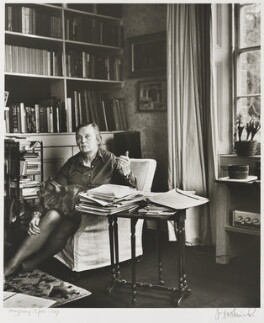 Mary Myfanwy Piper (28 March 1911 – 18 January 1997) was a British art critic
and opera librettist.
Mary Myfanwy Piper (28 March 1911 – 18 January 1997) was a British art critic
and opera librettist.Mary Myfanwy Evans was born into a Welsh family in London. Her father was a chemist in Hampstead, north London. She attended North London Collegiate School, where she won a scholarship to read English Language and Literature at St. Hugh's College, Oxford. From 1935 to 1937, she edited the periodical Axis which was devoted to abstract art. She married the artist John Piper in 1937, and lived with him in rural surroundings at Fawley Bottom, Buckinghamshire (near Henley-on-Thames) for much of her life. Between 1954 and 1973 she collaborated with the composer Benjamin
Britten on several of his operas, and between 1977 and 1981 with composer
Alun Hoddinott
on most of his operatic works. She also wrote the libretto for Easter
by Malcolm Williamson. She was a friend of the poet John Betjeman, who wrote several poems
addressing her, such as "Myfanwy" and "Myfanwy at Oxford". |
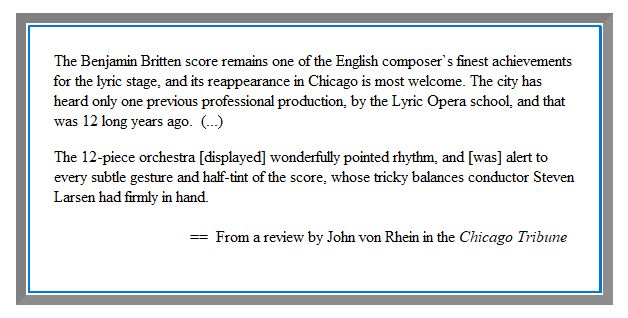 BD: Is it significant that it moves up a half-step?
BD: Is it significant that it moves up a half-step?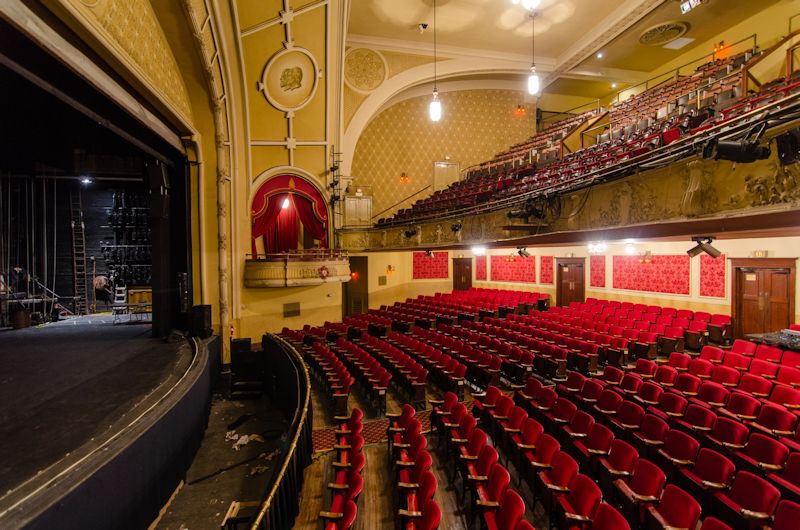
Located in the Lakeview neighborhood of Chicago, the Athenaeum Theatre was built in 1911. According to their website, it is the “oldest continuously-operating off-Loop theater in Chicago.” None of its 985 seats is more than 95 feet from the stage. |
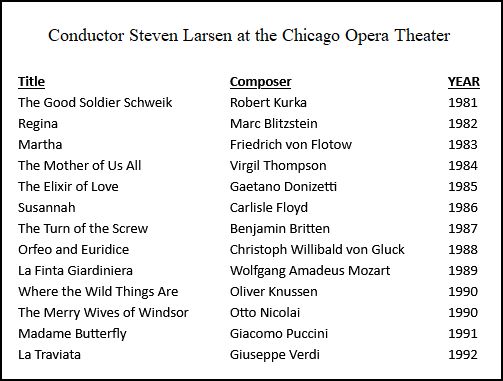 Larsen: I don’t think so, no. We are very fortunate
at Chicago Opera Theater because of the works that we do. We can
do works that many of our colleagues in other companies would love to be
able to do. We’ve established the tradition for doing them, and for
doing them well, and we have a following. As far as the composition
of new operas, I’m a bit puzzled right now. Things are going in
a couple of divergent directions. We have Philip Glass on the one
hand, and the so-called Minimalist operas, which is making a huge splash
everywhere. They’re playing to sold out audiences. I don’t
particularly care for them myself, and it’s not because I’m a conservative,
not in the least. I just find them to be, by operatic standards, extremely
vacuous. They’re not operas.
Larsen: I don’t think so, no. We are very fortunate
at Chicago Opera Theater because of the works that we do. We can
do works that many of our colleagues in other companies would love to be
able to do. We’ve established the tradition for doing them, and for
doing them well, and we have a following. As far as the composition
of new operas, I’m a bit puzzled right now. Things are going in
a couple of divergent directions. We have Philip Glass on the one
hand, and the so-called Minimalist operas, which is making a huge splash
everywhere. They’re playing to sold out audiences. I don’t
particularly care for them myself, and it’s not because I’m a conservative,
not in the least. I just find them to be, by operatic standards, extremely
vacuous. They’re not operas.© 1987 Bruce Duffie
This conversation was recorded in Chicago on March 25, 1987. Portions were broadcast on WNIB the following week. This transcription was made in 2021, and posted on this website at that time. My thanks to British soprano Una Barry for her help in preparing this website presentation.
To see a full list (with links) of interviews which have been transcribed and posted on this website, click here. To read my thoughts on editing these interviews for print, as well as a few other interesting observations, click here.
Award - winning broadcaster Bruce Duffie was with WNIB, Classical 97 in Chicago from 1975 until its final moment as a classical station in February of 2001. His interviews have also appeared in various magazines and journals since 1980, and he now continues his broadcast series on WNUR-FM, as well as on Contemporary Classical Internet Radio.
You are invited to visit his website for more information about his work, including selected transcripts of other interviews, plus a full list of his guests. He would also like to call your attention to the photos and information about his grandfather, who was a pioneer in the automotive field more than a century ago. You may also send him E-Mail with comments, questions and suggestions.